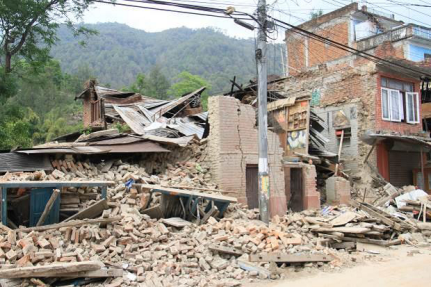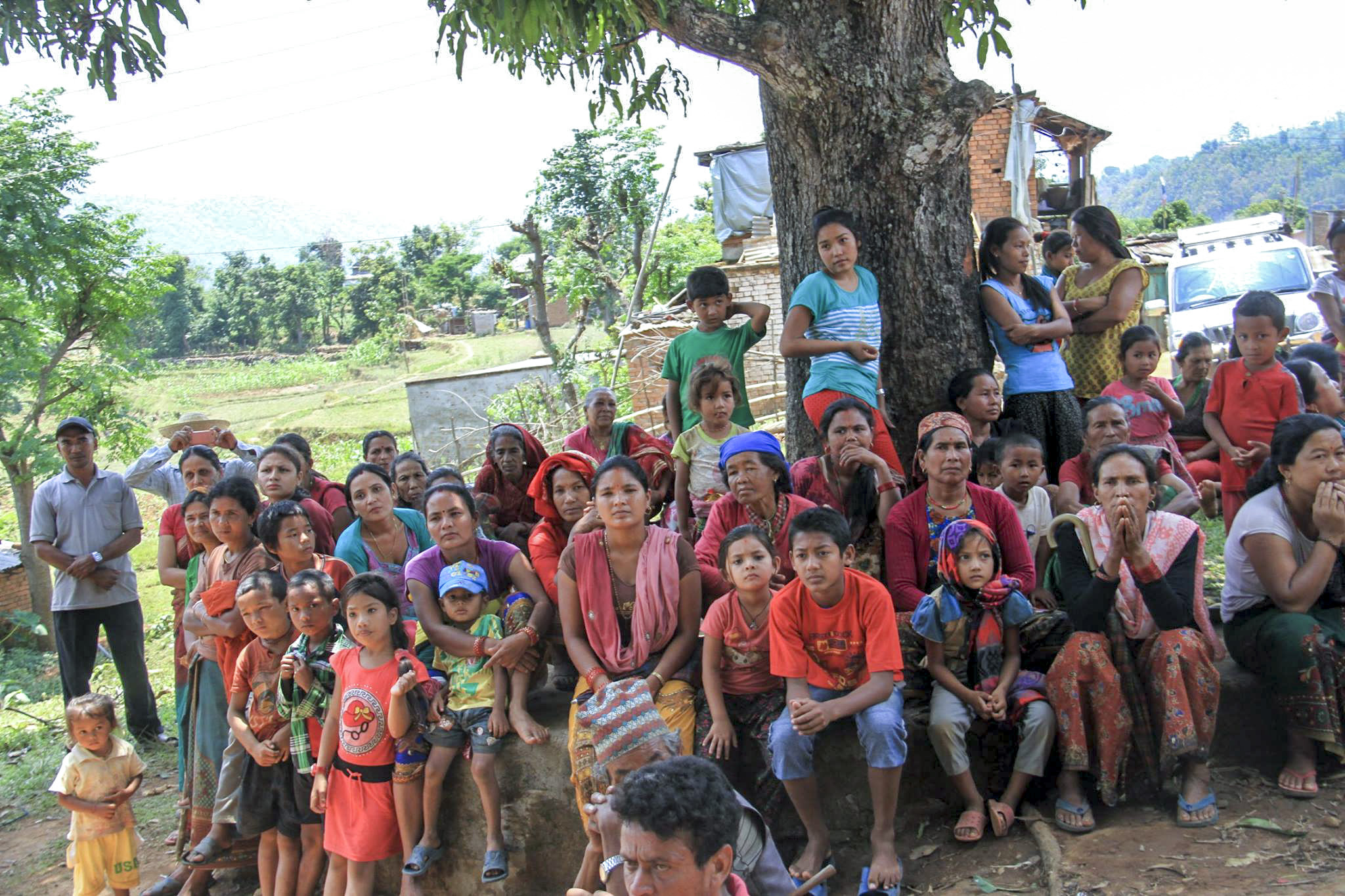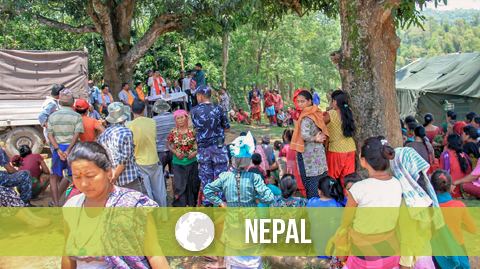UTS Alum at Center of Nepal Quake
The following report is from Dr. Robert Kittel, UTS ’93, who was in Kathmandu on April 25 and whose wife remains there. Dr. Kittel is temporarily visiting the United States and serves as the Universal Peace Federation Director for Education in Asia.

Everything was prepared to receive 700+ couples in Kathmandu when the earthquake struck. This large tent became a refugee center that day.
The earthquake northwest of Kathmandu on April 25 was the second largest earthquake in Nepal’s history. As of today, nearly 9,000 have been reported killed in Nepal and thousands are still missing. The Prime Minister of Nepal, H.E. Sushil Koriala, said he expected the number of casualties to reach 10,000. The Chief of the Army said the number may reach 15,000.
The epicenter of the first earthquake was 80 kilometers northwest of Kathmandu, in Gorkha, the hometown of the Cheong Il Guk (CIG) Special Envoy to Nepal, Hon. Ek Nath Dhakal. In several villages in Gorkha not a single building or house was left undamaged while most are rubble. The earthquake struck at 11:56 a.m., just as we were beginning two Tribal Messiah Holy Marriage Blessing Ceremonies: one in Kathmandu with 700+ couples and another in Biratnagar (southeastern Nepal) with more than 1,200+ couples.
Dr. Chung Sik Yong, CIG Special Emissary for Asia, came to Nepal to be at this event in Kathmandu because this Marriage Blessing includes his close friends and followers, and would be regarded as his “Nepalese tribe.” After Dr. Yong reported the severity of the damage to True Mother, she immediately (the next day) designated $1 million to go to Nepal. Half of this generous gift was designated for the Prime Minister’s Disaster Relief Fund, and half will go to the Family Federation for World Peace and Unification – Nepal. All the funds will be utilized to provide relief and recovery to the earthquake victims.

Shiva Krishna’s house, which was the home of a Blessed Central Family. More than 40 families were saved by the fact that they were in the Blessing venue at the time of the quake.
Many houses belonging to Family Federation leaders, including Zen and Nila Shrestha’s relatives who were helping prepare for this Marriage Blessing were totally destroyed.
The blessing in disguise was immediately obvious. The lives of as many as 40 couples at the Kathmandu Marriage Blessing were saved by participating in the Marriage Blessing because their houses collapsed during the quake. If they had been inside their homes, then there is a good chance they might have been killed. And the Marriage Blessing venue (a tent) immediately became the first refugee camp and still continues as of today .
Report on the Quake’s Impact on the Blessing Ceremony in Biratnagar
The Marriage Blessing in Biratnagar, in Southeastern Nepal was originally planned for more than 1,200 couples and would have been the Tribal Messiah foundation for two Unificationist families. On the morning of April 25 heavy winds and strong rains destroyed the Marriage Blessing venue. In many ways this reminded me of Yankee Stadium.
In a few hours our brothers and sisters worked hard to rebuild the stage and repair the tent, just in time for the Marriage Blessing. Then as the Marriage Blessing was going to begin a second disaster struck—the 7.8 magnitude earthquake hit. Immediately, nearly half the audience fled, and among those who departed were our religious leaders.
But the emcee, Mr. Prakash Babu Thapa, urged the audience to stay. The majority did.
For many who stayed, the highlight was the Pure Love Pledge. The enthusiasm of the young students to come on stage and pledge to remain pure—in front of their elders and peers—brought smiles to faces of everyone in the audience.
Facts about the Quake on April 25

Casualties have also been reported in three adjoining nations: India, China, and Bangladesh.
According to United Nations reports, as many as eight million people will be affected by the disaster—almost one third of Nepal’s 27.8 million population; 1.4 million are in need of immediate relief. Estimates suggest 780,000 homes have been destroyed.
The quake triggered an avalanche on Mt. Everest killing at least 19 people (foreigners and Nepalese Sherpas) making this the deadliest day on the world’s tallest mountain. It also triggered another huge avalanche and mud slide in Langtang Valley (130 km north of Kathmandu, close to the border with Tibet) where 250 people are missing.
The European Space Agency said that during the first earthquake parts of Kathmandu were raised up by more than a meter and shifted southwards by three meters—all within 30 seconds—thus causing severe damage to parts of the capital. At the same time Mt. Everest shrank about 2.5 cm (but it continues to grow). The depth of the quake was just 15 kilometers (the average is around 75-80 kilometers deep).
This same report warned that not all of the stress built up by the slowly colliding tetanic plates of India and Asia was released in the magnitude 7.8 quake and aftershocks. The biggest after shock was of 7.3 magnitude with another measuring 6.7 on the Richter scale.
Since the big earthquake on April 25, there have been more than 240 aftershocks above a 4.0 magnitude. Tremors are expected to continue for at least three months.

